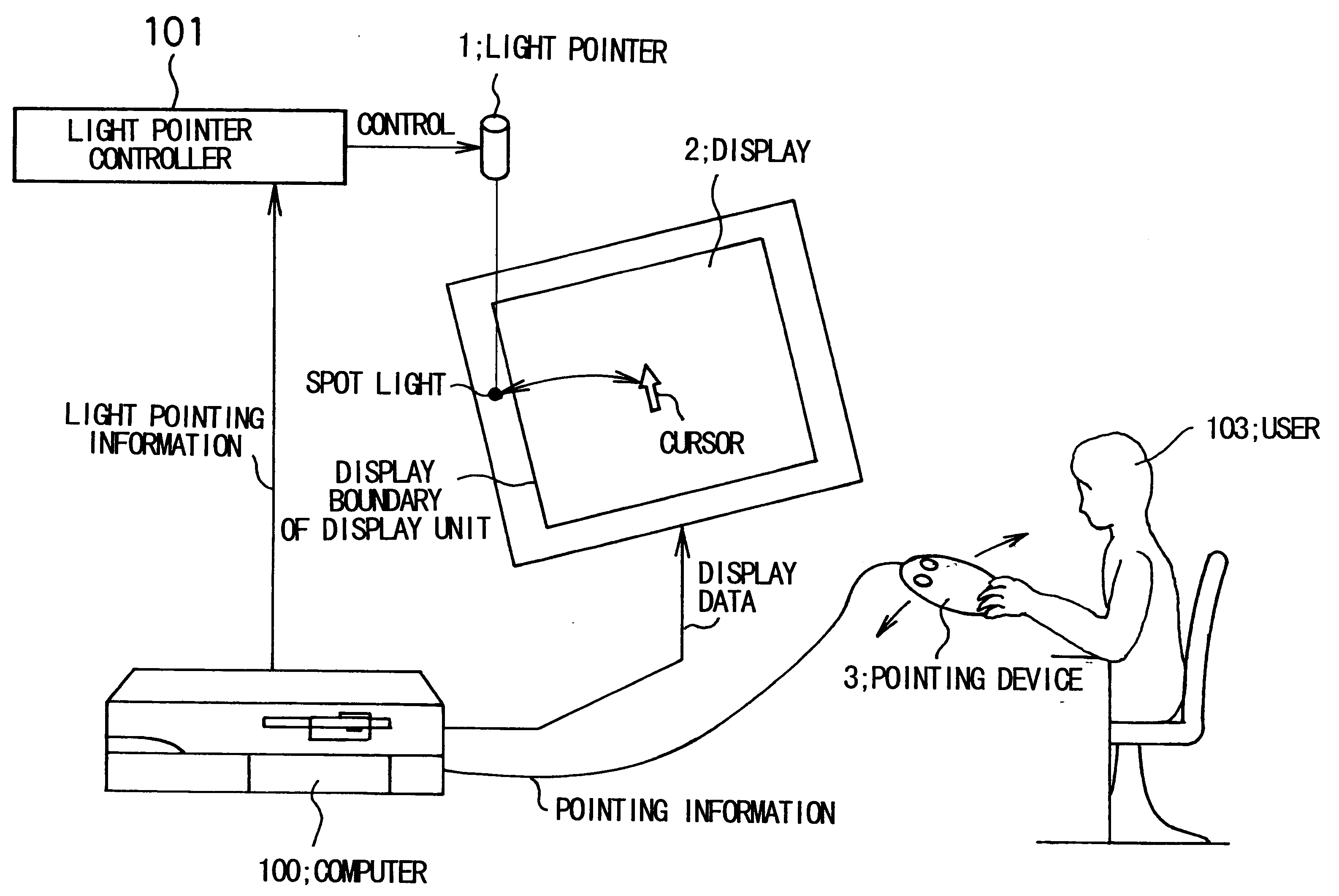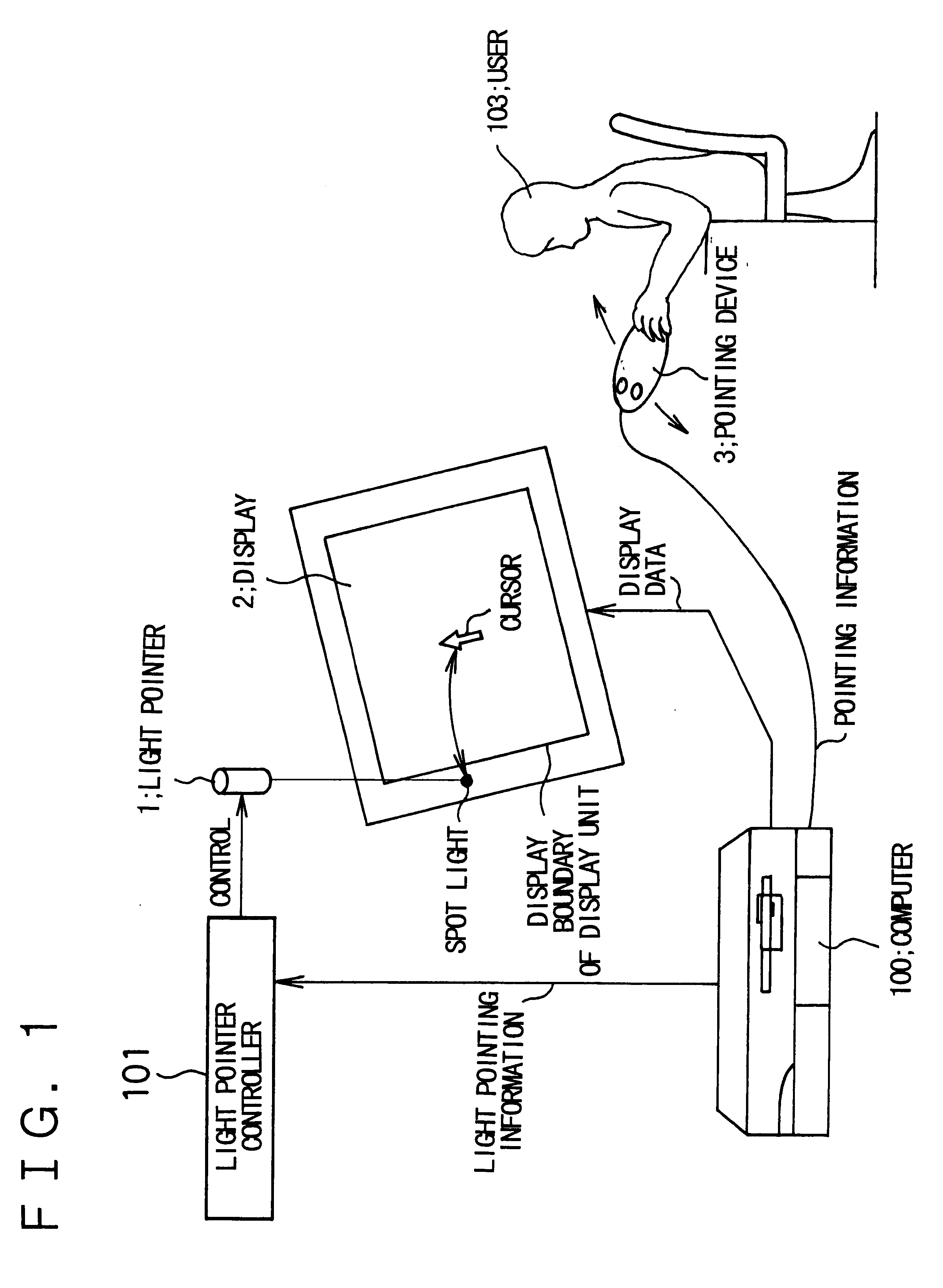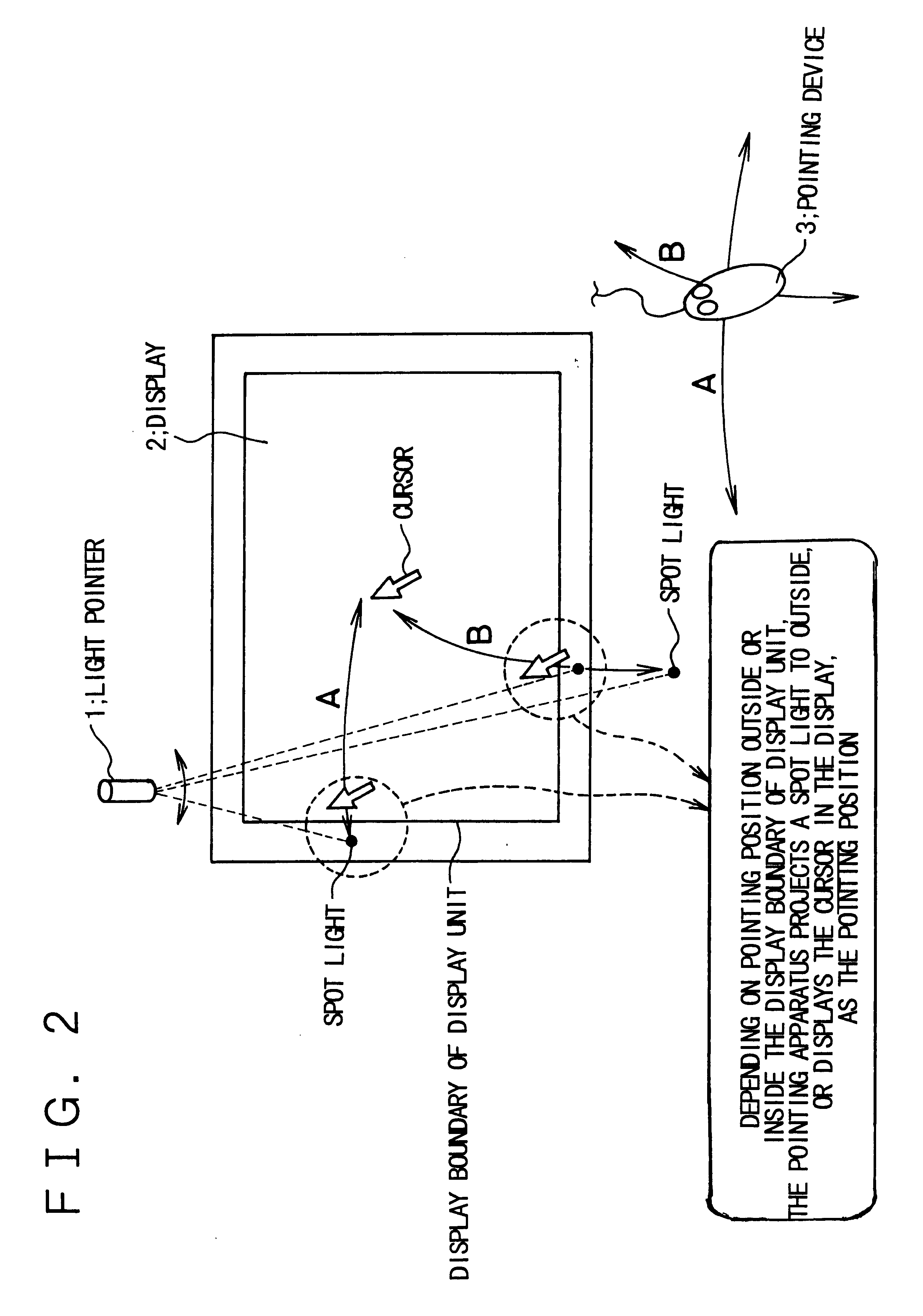Pointing apparatus
a technology of pointing apparatus and pointing table, which is applied in the direction of instruments, computing, electric digital data processing, etc., can solve the problems of not being able to seamlessly point the user, the user cannot do exclusively those virtual world tasks in videos projected on the work desk, and the projector cannot project high-quality images of such complex virtual world screens as graphical user interfaces
- Summary
- Abstract
- Description
- Claims
- Application Information
AI Technical Summary
Benefits of technology
Problems solved by technology
Method used
Image
Examples
examples
FIG. 1 is a diagram showing the configuration of a first embodiment according to the present invention. Referring to FIG. 1, the first embodiment comprises a light pointer 1 capable of projecting a desired-shaped light beam on a real object in the real world at a desired position or in a desired direction, a display 2 on which virtual world objects such as graphical user interfaces or electronic data are displayed, a pointing device 3 manipulated by a user 103 to point to a desired position, light pointer controller 101 for controlling the light pointer 1, and a computer 100 to which the light pointer controller 101, display 2 and pointing device 3 are connected (or communicated) via predetermined interfaces. The computer 100 comprises CPU, memories, disk units and other peripheral devices upon needs.
The light pointer 1 can project a desired-shaped light beam on an object at or onto a desired position or in a desired direction. The light beam should be intensive enough for the user ...
first embodiment
When the user moves the pointing device 3 in the direction indicated by arrow B, the boundary between the virtual world and the real world is not the boundary detected by the boundary detection sensor 4 but the boundary of the display area on the display 2. Therefore, in this case, the user can point to a position on the display 2 with the cursor, and point to a position on the real object (i.e., here, outside the display area) with the pointer light beam, across the boundary of the display area on the display 2 as in the first embodiment described above.
The detection method of the boundary detection sensor 4 depends on a real object to be detected. For example, when the real object is a document as shown in FIG. 4 or FIG. 5, a photoelectric switch may be provided on the frame of the display 2 to detect whether paper is placed. A one-dimensional or two-dimensional image sensor may also be used. The boundary detection method is not detailed here because it does not relate directly to...
fourth embodiment
FIG. 6 is a diagram showing the configuration of the present invention. Referring to FIG. 6, a light pointer 1 capable of projecting a desired-shaped pointer projection light beam at a desired position on the work desk at which the user works, a built-in display 10 built in the working surface of the work desk, a pointing device 3 used to operate the pointer projection light beam projected from the light pointer 1 and the position of the cursor on the built-in display 10, a camera 11 capable of monitoring objects on the work desk, a reflecting mirror 12 provided on the work desk, light pointer controller 101 for controlling the light pointer 1, boundary determination means 102 for determining the boundary between the display screen of the built-in display 10 and the document on the work desk based on image data sent from the camera 11, and a computer 100 controlling the whole system.
The built-in display 10 may be a liquid crystal display or a projection-type projector built in the w...
PUM
 Login to View More
Login to View More Abstract
Description
Claims
Application Information
 Login to View More
Login to View More - R&D
- Intellectual Property
- Life Sciences
- Materials
- Tech Scout
- Unparalleled Data Quality
- Higher Quality Content
- 60% Fewer Hallucinations
Browse by: Latest US Patents, China's latest patents, Technical Efficacy Thesaurus, Application Domain, Technology Topic, Popular Technical Reports.
© 2025 PatSnap. All rights reserved.Legal|Privacy policy|Modern Slavery Act Transparency Statement|Sitemap|About US| Contact US: help@patsnap.com



